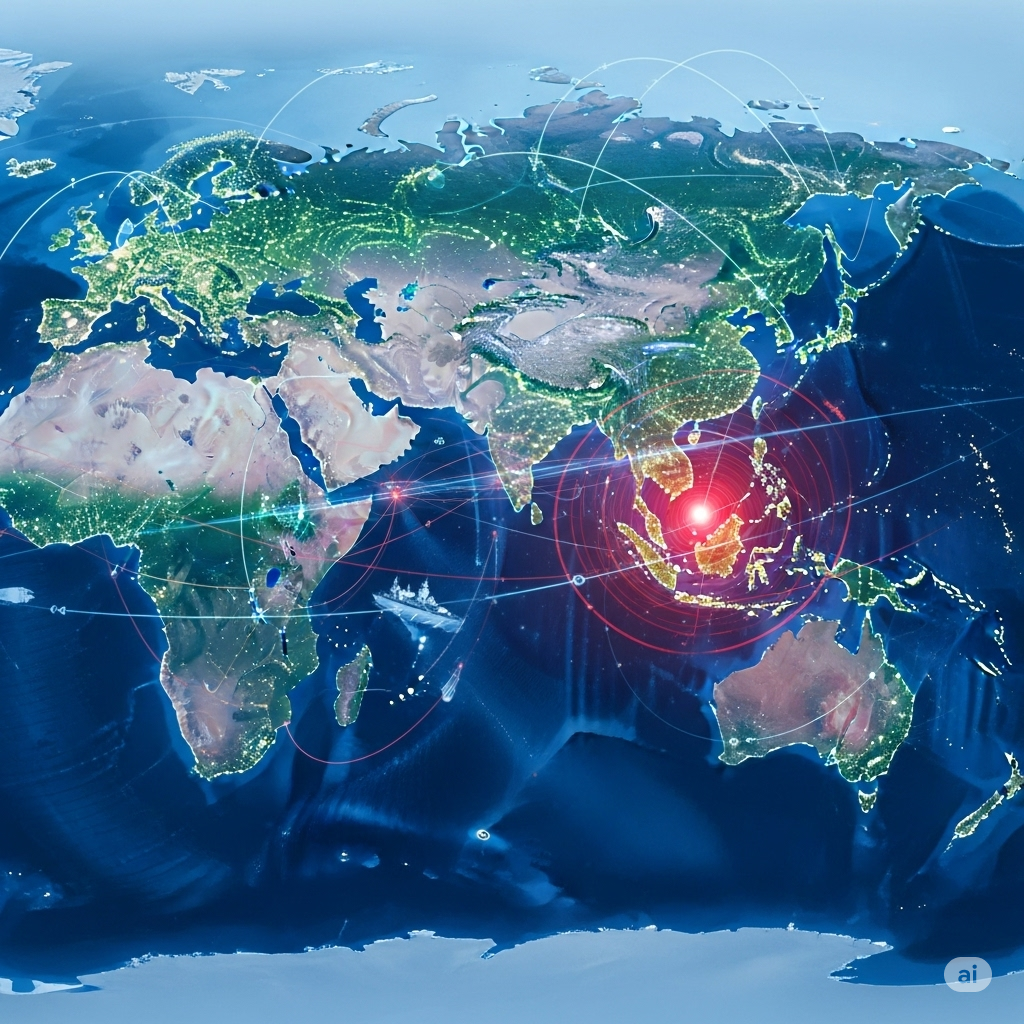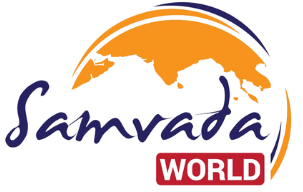
- As global power shifts, discarding the outdated “Asia-Pacific” for “Indo-Pacific” is crucial, as it provides a more accurate strategic compass for the multilateral order where India’s partnerships with the US and Europe will be central.
- The relabelling of US Pacific Command as the Indo-Pacific Command was more than cosmetic: It was a signal to Washington’s determination to mobilise naval, air, cyber and space forces across two oceans and to embroil India in the very fabric of America’s strategy.
- In April 2021, the EU officially endorsed its Strategy for Cooperation in the Indo-Pacific, which commits to defend a rule-based order and support sustainable connectivity, under its Global Gateway, to strengthen trade and security with ASEAN, Japan, India, as well as other partners.
- China’s continuing aggregation within the South China Sea in excess of 3 trillion USD in trade flows annually remains the litmus test for the stability of the Indo-Pacific.
Between the liveliness of city streets, a platform echoes with the din and blends into a raucous symphony. Momentary rays of light from towering apartments shine red in the night sky; those palaces below start getting their futuristic garb too. Looking at the flow of these people between buildings, every single one is a lone ranger amidst so much activity. The smells of cooking food and engine exhaust ha still create an intoxicating brew of aromas in your nostrils. Having lived through so busy and confused existence, there can be nothing but vitality coursing through the city just a sheer pulse driving at music speed out every other message.
From PACOM to INDOPACOM: A Nod to India’s Rising Role
In May last year, the US Pacific Command was renamed the Indo-Pacific Command (INDOPACOM) by Defence Secretary Jim Mattis, a clear nod to India’s role at the centre of regional security. “In recognition of the increasing connectivity of the two oceans, today we announce the creation of the US Indo-Pacific Command,” Mattis proclaimed at Pearl Harbor, shining a spotlight on India alongside the US’ traditional East Asian partners. This relabelling was more than cosmetic: It was a signal to Washington’s determination to mobilize naval, air, cyber and space forces across two oceans and to embroil India in the very fabric of America’s strategy.
Europe’s Strategic Turn Eastward
Brussels, not to be outmanoeuvred, has incorporated the Indo-Pacific in its Global Strategy. In April 2021, the EU officially endorsed its Strategy for Cooperation in the Indo-Pacific, which commits to defend a rule-based order and support sustainable connectivity, under its Global Gateway, to strengthen trade and security with ASEAN, Japan, India, as well as other partners. France and Germany, leading the continental pack in their regional commitment, have issued national guidelines stressing maritime security, climate resilience and human rights in the Indo-Pacific theatre. This European turn recognizes that the stakes of everything from China’s Belt and Road infrastructure to its coercive diplomacy stretch well beyond East Asia.
Contesting China’s Maritime Assertiveness
China’s continuing aggregation within the South China Sea in excess of 3 trillion USD in trade flows annually remains the litmus test for the stability of the Indo-Pacific. The recent combined sea and air patrols by the People’s Liberation Army Southern Theatre Command are a stark reminder of Beijing’s preparedness to act on its wide-ranging nine-dash claims, despite a 2016 tribunal ruling that found them invalid. In turn, Manila, Washington, Canberra, and Tokyo are stitching together “one-theatre” command concepts and embiggening freedom-of-navigation ops, while the Quad’s July 2025 ministerial in Washington readmitted commitments to collective deterrence and capacity-building.
India: The Linchpin of the Indo-Pacific
Its geographical luck, spanning critical choke points from the Strait of Hormuz to the Malacca Strait, gives India outsize strategic heft. It’s the Andaman and Nicobar Command, a “first integrated tri-service command in India” located at Port Blair, that protects vital sea lanes that 90 per cent of world trade transits and extends its reach throughout Southeast Asia and beyond. Simultaneously but in contravention to it, India has nurtured a “Necklace of Diamonds” of port access accords from Duqm to Changi that twists against China’s “String of Pearls”, to lock in both a logistic depth for its own and partners’ shipping. India’s hosting of Exercise Malabar with the US, Japan and Australia is evidence of its operational indispensability.
Towards a Free, Open, and Inclusive Indo-Pacific
A genuinely Free and Open Indo-Pacific requires more than semantics. It demands coherent approaches that encompass US global deterrence architectures, Europe’s multilateral obligations, India’s maritime range, and the security assurances of regional democracies. Properly sounded, “Indo-Pacific” reorients policy with geography, history and the emerging security architecture one that values the Indian Ocean no less than the Pacific, and in which Delhi is the lynchpin as well as the driver.
As global power shifts, let’s discard outdated “Asia-Pacific” terms and adopt one that more accurately reflects the 21st-century strategic landscape. After all, acknowledging the Indo-Pacific is not just a question of what to call a region: it is also a compass bearing for the future of the multilateral order, one in which India and its partnership with the US and Europe will be central.
References:
- European External Action Service. (2021, April). EU strategy for cooperation in the Indo-Pacific. European Commission.
- Federal Foreign Office. (2022). Germany’s guidelines on the Indo-Pacific. The Federal Republic of Germany.
- Government of India, Ministry of Defence. (2001). Establishment of the Andaman and Nicobar Command. New Delhi: Ministry of Defence.
- Government of India, Ministry of External Affairs. (2023). Port access agreements and the concept of “Necklace of Diamonds”. New Delhi: Ministry of External Affairs.
- Indian Navy. (2025). Exercise Malabar 2025: Operational press release. New Delhi: Indian Navy.
- Mattis, J. N. (2018, May 30). Remarks by Secretary of Defense James N. Mattis on the Indo-Pacific Command. U.S. Department of Defense.
- Ministry for the Armed Forces. (2022). France’s strategic guidelines for the Indo-Pacific. Paris: Government of France.
- Permanent Court of Arbitration. (2016). Award on maritime claims in the South China Sea (Philippines v. China). The Hague: PCA.
- The White House. (2025, July 1). Press briefing by Press Secretary Karoline Leavitt. Washington, DC: White House Press Secretary’s Office.
- U.S. Department of State. (2025, July 1). Joint statement of the Quad Foreign Ministers meeting in Washington, DC. Washington, DC: U.S. Department of State.
Shashank is a Master’s student in Diplomacy, Law, and Business at O.P. Jindal Global University. He is also a researcher and coordinator at the Center for Global South and the Center for Southeast Asian Studies. His research interests include Southeast Asia, Chinese foreign policy, India’s Act East Policy, and global security dynamics. Views expressed are the author’s own.
